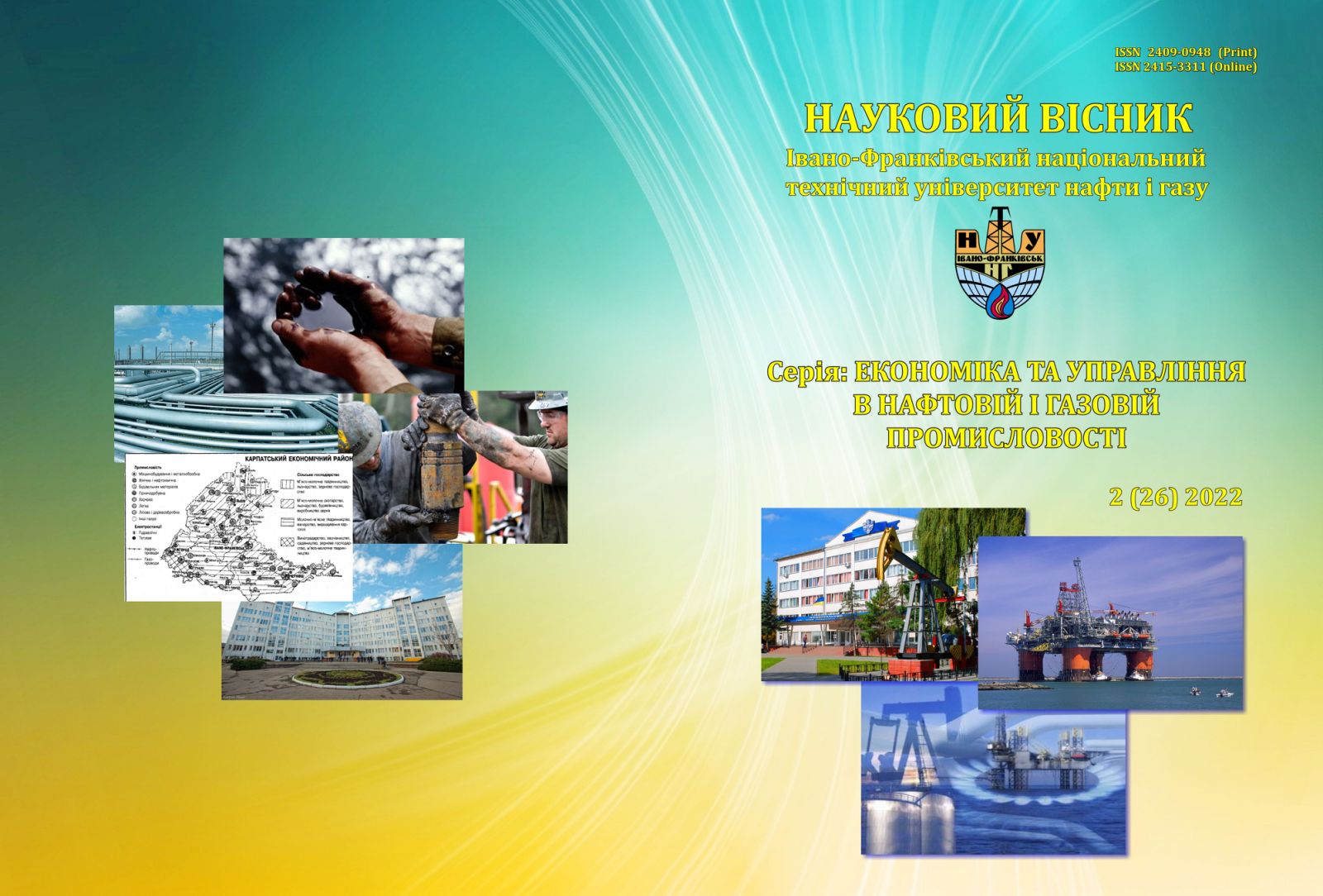PROSPECTS FOR THE FORMATION OF OIL AND GAS TOURIST DESTINATIONS
DOI:
https://doi.org/10.31471/2409-0948-2022-2(26)-16-25Keywords:
tourism, tourist product, tourist destination, oil and gas enterprises.Abstract
The article considers the need to produce innovative types of tourism that would combine work and rest, perform a cognitive and educational function in combination with health and recreation. It is justified that at the request of the modern tourist and his / her needs it is expedient to form tourist destinations as separate territories that are attractive due to specific infrastructure and opportunities to offer a unique tourist service, product, satisfying a combination of the most diverse needs of the traveler.
The study of the "tourist service" concept content and types of tourist products became the basis for the formation of the concept of "oil and gas tourist destination". The main features of the tourist destination and the prerequisites for the formation of oil and gas tourist destinations are given.
Subjects of the oil and gas industry of Ukraine, regions of oil and gas deposits, and opportunities to develop an innovative type of tourism within regional tourist oil and gas destinations are considered.
It has been proven that having a significant health and medical infrastructure, having various gyms, drilling exhibitions, oil and gas industry museums, squares with rocking machines models, etc., it is worth talking about the further development of this unique infrastructure in the form of tourist destinations with the aim of offering a wide the circle of travelers (students, scientists, practitioners) of innovative tourist products; promoting the relevance of engineering knowledge and earth sciences; demonstration of modern trends in energy in general, and the oil and gas industry in particular; formation of a platform for gaining practical experience.
It was established that the advantage of creating tourist destinations of the oil and gas complex for the traveler is the combination of the process of acquiring new knowledge and practical skills with rest and recovery, for the region - development due to the formation of new unique tourist products within the tourist destination, for oil and gas enterprises - the development of a new type of activity, obtaining additional profits, popularization of oil and gas professions.
References
Пацюк В. С. Індустріальний туризм і перспективи його розвитку в Україні. Наукові записки Вінницького державного педагогічного університету ім. М. Коцюбинського. Серія : Географія. 2008. № 15. URL: https://tourlib.net/statti_ukr/pacjuk2.htm.
Кісь С. Я., Гуменюк В. В., Кісь Г. Р., Гречаник Б. В. Концептуальні засади розвитку готельно-ресторанної та курортно-рекреаційної інфраструктури нафтогазового комплексу. Науковий вісник ІФНТУНГ. 2018. № 2 (18). С. 18–25.
Закону України «Про туризм». Документ 324/95-ВР, чинний, поточна редакція від 16.10.2020 р. URL: https://zakon.rada.gov.ua/laws/show/324/95-%D0%B2%D1%80#Text.
Кифяк В. Ф. Організація туризму. Чернівці : КНИГИ-XXI, 2008. 344 с.
Горшкова Л. О. Теоретичні аспекти обслуговування туристичного продукту. Глобальні та національні проблеми економіки. 2017. Вип. 20. С. 292–296.
Кіптенко В.К. Менеджмент туризму: підручник Київ : Знання, 2010. 502 с.
International Recommendations for Tourism Statistics 2008. Series M No. 83/Rev.1. New York, 2010. URL: https://unstats.un.org/unsd/publication/seriesm/seriesm_83rev1e.pdf.
Грибова Д. В. Створення туристичного продукту та інноваційні види туризму. Науковий вісник Херсонського державного університету. Серія: Економічні науки. 2021. Вип. 43. С. 33–37. URL: http://ej.journal.kspu.edu/index.php/ej/article/view/745/722.
Концепція життєвого циклу туристичного продукту. URL: https://referatss.com.ua/work/koncepcija-zhittievogo-ciklu-turistichnogo-produktu/
Візерська М. С. Використання інноваційних продуктів та технологій як елемент управління життєвого циклу туристичного продукту. Часопис картографії. 2019. № 1 (20). C. 69–83.
Дестинація. URL: https://uk.wikipedia.org.
Leiper N. Tourism Management. 3d ed.Sidney: Pearson Education Australia, 2004. 326 p.
Ткаченко Т. І. Сталий розвиток туризму: теорія, методологія, реалії бізнесу: монографія. Київ : КНТЕУ, 2006. 537 с.
Семенова М., Гунаре М. Правове визначення туристичної дестинації з урахуванням міжнародного законодавства та національного законодавства країн ЄС. URL: http://semenova-partners.com/2020/02/04/pravove-viznachennya-turistichnoyi-destinatsiyi-z-urahuvannyam-mizhnarodnogo-zakonodavtsva-ta-natsionalnogo-zakonodavstva-krayin-yes/
Кононенко Т. П. Туристична дестинація як елемент системи туризму в Україні. 2018. Актуальні проблеми правової науки і державотворення в Україні в контексті правової інтеграції : матеріали ХІ Міжнародної науково-практичної конференції (18–19 травня 2018 року, м. Суми) / Сумська філія Харківського національного університету внутрішніх справ. Суми: Видавничий дім «Ельдорадо», 2018. С. 142–144. URL: http://dspace.univd.edu.ua/xmlui/handle/123456789/13669.
Офіційний сайт НАК «Нафтогаз України». URL: https://www.naftogaz.com/.
Історія та перспективи нафтогазовидобування : навчальний посібник. Білецький В. С., Гайко Г. І., Орловський В. М. Львів : Новий Світ – 2000, 2019. 302 с.
Офіційний сайт ІФНТУНГ. URL: https://nung.edu.ua/.
Музеї нафтової і газової промисловості України. Борислав. URL: https://karpaty.rocks/muzey-naftovoyi-i-gazovoyi-promislovosti-ukrayini-borislav.
Downloads
Published
How to Cite
Issue
Section
License
Copyright and Licensing Terms
Copyright Statement
The authors who publish in the journal accept the following conditions:
- The authors retain the copyright and grant the journal the right of first publication, licensed with Creative CommonsCC BY-NC-SA , which permits other people to remix, transform, and build upon the material and use the material for non-commercial purposes, give appropriate credit and distribute the contributions under the same license as the original.
- The authors can conclude additional agreements on the non-exclusive distribution of the journal’s published version of the work (for example, publication of the work in electronic repositories) with an acknowledgment of its initial publication in this journal.
- The authors can upload the published articles on the Internet (for example, in electronic repositories or on web-sites), as it will stimulate fruitful scholarly discussions and increase the citation rates of the published articles.


1.png)


1.png)





